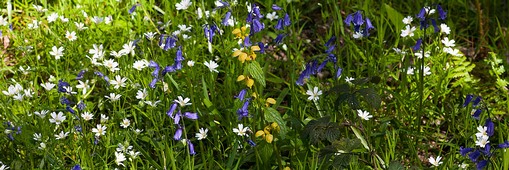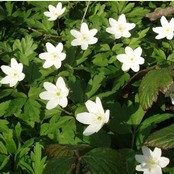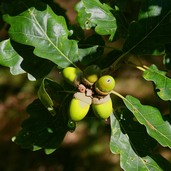

Biodiversity
Action
Plan

Ancient woodland indicators
One of the most striking features of Ancient Woodlands, distinguishing them from recently established woods and plantations, is their rich and varied ground flora. Certain plants -Ancient Woodland Indicators- are mainly restricted to ancient woodlands. A good range of such plants therefore may indicate an Ancient Woodland.
These plants are found because Ancient Woodland, known to have been in existence since 1600, has developed distinctive soils, fungi, and plant communities over the centuries.
Ancient Woodland Indicator Plants in Barnsley, South Yorkshire
Barren Strawberry
Bluebell
Bilberry
Broad-leaved Helleborine
Bugle
Bush Vetch
Climbing Corydalis
Common Cow-wheat
Common Figwort
Dog’s Mercury
Early-purple Orchid
Greater Stitchwort
Hairy St John’s Wort
Pale Wood Violet/Early Dod Violet
Opposite-leaved Golden Saxifrage
Perforate St John’s Wort
Pignut
Primrose
Ramsons
Sanicle
Slender St John’s Wort
Square-stalked St John’s Wort
Sweet Woodruff
Townhall Clock/Moschatel
Toothwort
Trailing St John’s Wort
Water Avens
Wild Strawberry
Wood Anemone
Wood Forget-Me-Not
Wood Horsetail
Wood Sorrel
Wood Speedwell
Yellow Archangel
Yellow Pimpernell
Grasses, Sedges and Woodrushes
Great Woodrush
Hairy Woodrush
Pale Sedge
Pendulous Sedge
Remote Sedge
Wood Sedge
Wood barley
Wood Meliick
Wood Millet
Trees and Shrubs
Aspen
Crab Apple
Guelder Rose
Holly
Sessile Oak
Small-leaved Lime
Wild Cherry
Based on AWI list compiled by Mel Jones.
Ancient Woodland Indicators
The most often seen Ancient Woodland Indicator plants include Bluebell, Dog’s Mercury, Greater Stitchwort, Wood Sorrel and Yellow Archangel. Wood Anemone, Ransoms (Wild Garlic) and Opposite-leaved Golden Saxifrage are found in damper areas, often alongside streams. Sessile Oak is strongly associated with Ancient Woodland as is Holly.
Although not ancient woodland indicators, Lesser Celandine and Honeysuckle are welcome features of these and other woodlands.
A list of plants characteristic of Ancient Woodlands in South Yorkshire has been produced by Professor Melvyn Jones. The presence of these plants as well as other notable plants is used in Barnsley for the identification of woodland Local Wildlife Sites.
By themselves the presence of a good number of Ancient Woodland Indicators in a woodland - although a welcome indication of biodiversity value - is not conclusive evidence that the woodland is ancient. This requires historical evidence from maps and archival material.
The presence of Ancient Woodland Indicator species in a hedge-bank may be evidence that the hedge was created from ancient woodland and in grassland may be evidence of former woodland habitat.


